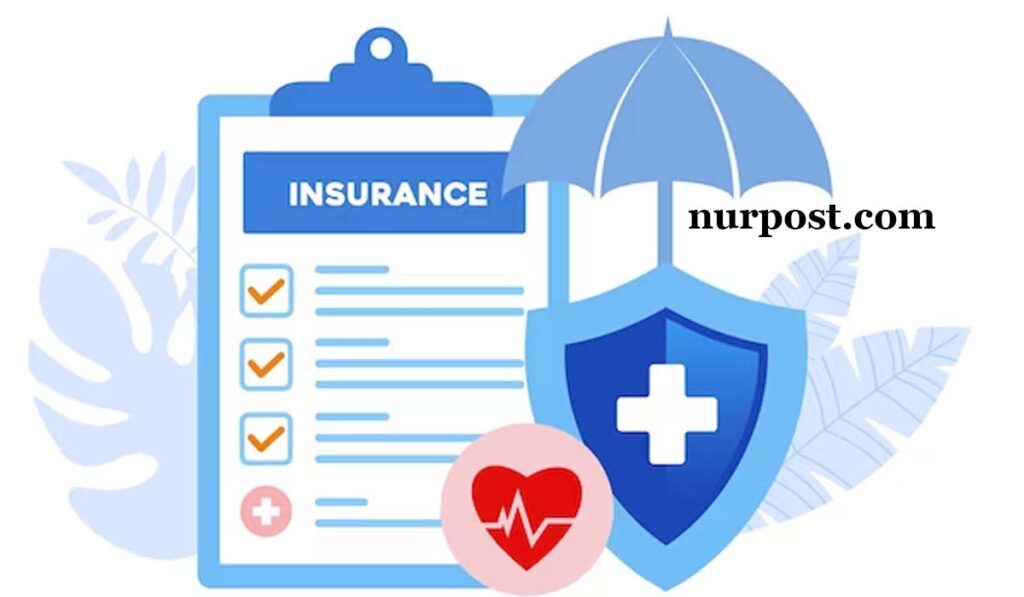How Health Insurance Works In America The healthcare system in the United States is complex, and understanding how health insurance works is crucial for individuals and families to navigate the intricacies of healthcare coverage.
In this article, we will provide a comprehensive guide to help you grasp the fundamentals of health insurance in America.
How Health Insurance Works In America
Health insurance is a contract between an individual or a group and an insurance company. It provides financial protection by covering a portion of medical expenses in exchange for regular premium payments.
Health insurance plans can be obtained through employers, government programs (such as Medicare and Medicaid), or private insurers.
Types of Health Insurance Plans
Employer-Sponsored Health Insurance
Many Americans receive health insurance coverage through their employers. These plans are typically offered as part of an employee benefits package, with the employer and the employee sharing the cost of premiums.
Employer-sponsored plans can vary in coverage levels and may include options such as Health Maintenance Organization (HMO), Preferred Provider Organization (PPO), or High Deductible Health Plans (HDHP).
Individual and Family Plans
Individuals and families who do not have access to employer-sponsored coverage can purchase health insurance plans directly from private insurers.
These plans are designed to meet the needs of individuals or families and can be purchased through state-based marketplaces or directly from insurance companies.
Government Programs
The U.S. government provides health insurance options for specific populations. Medicare is a federal program primarily for individuals aged 65 and older, as well as certain younger individuals with disabilities.
Medicaid is a joint federal and state program that offers health coverage to low-income individuals and families.
Key Concepts in Health Insurance
Premiums
Premiums are the regular payments made to the insurance company to maintain coverage. They can vary depending on factors such as age, location, and the level of coverage selected.
How Health Insurance Works In America
By familiarizing yourself with the types of health insurance plans, key concepts, networks, coverage, and benefits.

You can make informed decisions about your healthcare and ensure that you have the necessary coverage to protect yourself and your family’s well-being.
Deductibles
A deductible is the amount an individual must pay out-of-pocket before the insurance coverage kicks in. For example, if you have a $1,000 deductible.
You must pay $1,000 of eligible medical expenses before your insurance starts covering costs.
Copayments and Coinsurance
Copayments are fixed amounts paid at the time of service (e.g., $20 for a doctor’s visit). Coinsurance, on the other hand, is a percentage of the total cost that individuals are responsible for paying (e.g., 20% of the total bill).
Out-of-Pocket Maximums
Health insurance plans often have an out-of-pocket maximum, which is the most an individual or family will have to pay in a given year. Once this limit is reached, the insurance company covers 100% of eligible expenses.
Network and Coverage
Health insurance plans often have networks of healthcare providers. HMOs typically require individuals to seek care within a specified network, while PPOs offer more flexibility to choose out-of-network providers at a higher cost.
It’s essential to understand the network and coverage limitations of your health insurance plan to ensure you have access to the healthcare providers you prefer.
Preauthorization and Medical Necessity
Certain medical procedures, treatments, or medications may require preauthorization from the insurance company.
This means that the insurance company must review and approve the medical necessity of the proposed care before covering the costs. Understanding the preauthorization process is crucial to avoiding unexpected expenses.
Benefits and Preventive Care
Health insurance plans typically cover a wide range of medical services, including hospital stays, prescription medications, preventive care, and specialist visits.
Preventive care, such as vaccinations and screenings, is often covered at no cost to the insured individual. Understanding the covered benefits and preventive care offerings can help individuals take full advantage of their health insurance.
How Health Insurance Works In America
Navigating the health insurance system in America can be overwhelming, but having a solid understanding of its basics is crucial for accessing and utilizing healthcare services effectively.
Open Enrollment Period
Health insurance plans typically have an annual open enrollment period during which individuals can enroll in or make changes to their coverage.
This period usually occurs once a year and provides an opportunity for individuals and families to select a new health insurance plan or modify their existing coverage.
Outside of the open enrollment period, individuals can only enroll or make changes if they experience a qualifying life event, such as getting married, having a baby, or losing other health insurance coverage.
Subsidies and Financial Assistance
The Affordable Care Act (ACA) introduced subsidies and financial assistance to help individuals and families with lower incomes afford health insurance coverage.
These subsidies are based on income and can help reduce the monthly premiums and out-of-pocket costs. Eligible individuals can apply for subsidies through state-based marketplaces or the federal Health Insurance Marketplace.
Medicaid Expansion
Under the ACA, states were given the option to expand their Medicaid programs to cover individuals and families with incomes up to a certain percentage of the federal poverty level.
How Health Insurance Works In America
Medicaid expansion has allowed millions of low-income Americans to gain access to affordable healthcare coverage.
However, not all states have chosen to expand their Medicaid programs, resulting in a coverage gap for some individuals.
Coverage Limitations and Exclusions
It’s important to note that health insurance plans may have limitations and exclusions. These can include specific treatments, procedures, or medications that are not covered by the plan.
It’s crucial to review the plan’s coverage documents and understand any limitations or exclusions before seeking medical care.
Healthcare Costs and Affordability
Healthcare costs in America can be significant, and even with health insurance coverage, individuals may still be responsible for out-of-pocket expenses.

These costs can include deductibles, copayments, coinsurance, and non-covered services. It’s important to budget and plan for these expenses to ensure that healthcare remains affordable.
Health Insurance and Employment
Employer-sponsored health insurance is a common way for individuals and families to obtain coverage. However, not all employers offer health insurance benefits.
Some individuals may be self-employed or work part-time, making them ineligible for employer-sponsored plans. In such cases, individuals may need to explore individual or family plans or government programs for coverage.
Changing Health Insurance Plans
Individuals and families may need to change health insurance plans due to various reasons, such as changes in employment, household size, or personal circumstances.
It’s important to understand the process for switching plans, including any waiting periods or potential gaps in coverage.
Navigating the Health Insurance System
Understanding health insurance terms, paperwork, and navigating the system can be challenging. Many insurance companies provide customer service representatives who can assist with questions and concerns.

Additionally, there are independent insurance brokers and healthcare advocates who can help individuals and families find and understand health insurance options.
Conclusion
Health insurance in America plays a vital role in ensuring access to necessary medical care and protecting individuals and families from substantial financial burdens.
By familiarizing yourself with the open enrollment period, subsidies, coverage limitations, healthcare costs, and resources available for assistance.
How Health Insurance Works In America
You can make informed decisions and maximize the benefits of your health insurance coverage.
Remember to regularly review your plan, understand its terms and conditions, and seek assistance when needed to navigate the complex healthcare system effectively.
